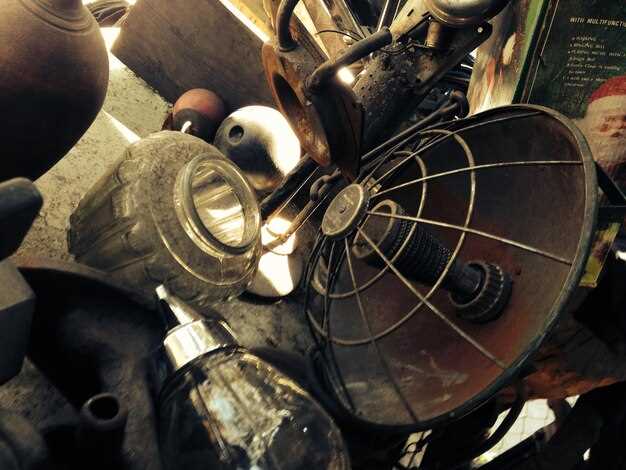
Owning a vintage car is a dream for many automotive enthusiasts, yet the joy of driving these classic machines can be hampered by battery issues. Vintage cars often spend long periods parked and underutilized, which can lead to battery degradation and malfunction. Understanding how to properly care for the battery in your classic car can prolong its life and enhance your driving experience.
One of the main challenges faced by vintage car owners is the fact that batteries require regular use to stay in optimal condition. When a classic car is rarely driven, the battery can lose its charge, leading to difficulties starting the engine. Implementing proper battery care strategies is essential to ensure that your classic vehicle remains roadworthy and does not suffer from preventable issues.
In this article, we will explore effective battery care tips specifically tailored for rarely driven classic cars. From selecting the right type of battery to understanding maintenance techniques, you will discover ways to keep your vintage beauty running smoothly and ready for the next adventure.
Understanding Battery Types Suitable for Vintage Cars

When it comes to vintage cars, selecting the right battery is crucial for optimal performance and longevity. Unlike modern vehicles, classic cars often require specific battery types that align with their unique power needs and design specifications.
Lead-Acid Batteries are the most common choice for vintage cars. These batteries offer a robust power supply and are relatively easy to maintain. Within this category, there are two notable subtypes: flooded lead-acid batteries and sealed lead-acid batteries. Flooded batteries require regular maintenance, including checking the water levels and ensuring corrosion-free terminals, while sealed variants are more user-friendly but offer limited service life.
Another option is the Optima Batteries, known for their spiral cell design that provides superior vibration resistance and durability. These batteries are excellent for classic cars that may experience rough rides or extended periods of inactivity, as they can maintain charge better than traditional lead-acid options.
For those looking for a lightweight alternative, Lithium-Ion Batteries have gained popularity. They are significantly lighter and have a longer lifespan compared to lead-acid batteries. However, it’s essential to ensure that the car’s charging system is compatible, as lithium batteries require specific charging parameters.
Finally, maintenance-free batteries are an attractive option for classic car owners. These batteries come pre-charged and sealed, reducing the need for regular maintenance. They often provide reliable performance, but owners should still consider checking the overall health periodically.
In conclusion, understanding the various battery types suitable for vintage cars is vital for ensuring optimal car care. Choosing the right battery type can enhance your classic car’s performance, allowing it to thrive on the open road.
Maintaining Charge Levels During Long-Term Storage
Proper management of a vintage car’s battery is crucial during extended periods of non-use. Without attention, the battery can discharge completely, leading to potential damage. Here are key strategies to maintain optimal charge levels:
- Periodic Charging: Connect the battery to a charger every few weeks. This helps maintain charge and prevents sulfation, which can occur when the battery sits idle for too long.
- Use a Smart Charger: Investing in a smart battery charger or maintainer is highly beneficial. These devices automatically adjust the charge level, ensuring the battery remains at an optimal state without overcharging.
- Disconnect the Battery: If the vintage car will remain unused for several months, consider disconnecting the battery. This reduces the risk of drain from parasitic loads, such as alarms or clock functions.
- Storage Environment: Store the battery in a cool, dry place. Extreme temperatures can negatively impact battery performance. Ideally, aim for a temperature range of 32°F to 80°F (0°C to 27°C).
By following these practices, owners can ensure their vintage car’s battery remains in excellent condition, ready for those occasional drives.
Best Practices for Cleaning and Inspecting Classic Car Batteries

Caring for vintage car batteries is essential for maintaining their performance and longevity, especially in rarely driven classic cars. Regular cleaning and inspection can prevent issues that may arise from neglect. Here are some best practices to ensure your classic car battery remains in optimal condition.
1. Safety First: Before starting any maintenance, wear protective eyewear and gloves. Batteries contain acid and can produce harmful gases, so working in a well-ventilated area is crucial.
2. Disconnecting the Battery: For safe cleaning, disconnect the battery terminals, starting with the negative terminal followed by the positive. This minimizes the risk of short circuits and accidental sparks.
3. Cleaning the Terminals: Use a mixture of baking soda and water to neutralize acid corrosion on battery terminals. Apply this paste with a brush to scrub away any buildup. Rinse thoroughly with water and dry the terminals completely.
4. Inspecting for Damage: Examine the battery case for any cracks, bulges, or leaks. A damaged battery can lose charge and potentially leak acid, which is harmful to your classic car.
5. Check Fluid Levels: For lead-acid batteries, ensure the electrolyte levels are adequate. If levels are low, add distilled water. Avoid overfilling to prevent spillage during operation.
6. Examine Cables and Connections: Inspect the battery cables for fraying or weakness. Ensure that connections are secure and free of corrosion. Tighten any loose connections to ensure optimal power delivery.
7. Use a Battery Maintainer: If your vintage car sits idle for long periods, consider using a battery maintainer. This device keeps the battery charged without overcharging, ensuring it remains ready for use.
8. Schedule Regular Inspections: Set a schedule for battery checks every few months. Regular maintenance helps identify issues early and extends the life of your classic car’s battery.
By adhering to these best practices for cleaning and inspecting your vintage car battery, you can ensure reliable performance and minimize the risk of unexpected breakdowns. Proper care leads to enhanced longevity and peace of mind when driving your classic beauty.


